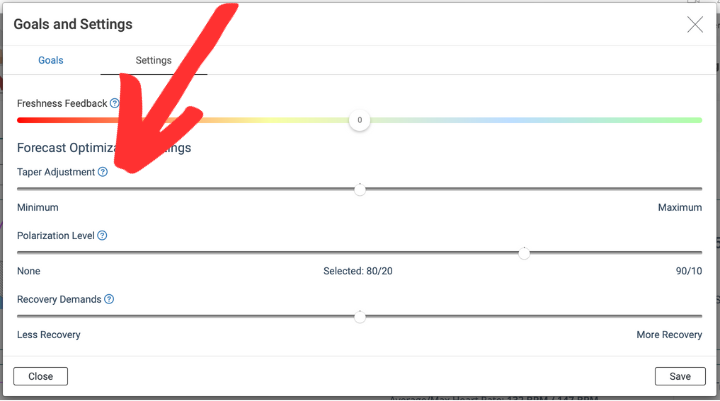What is a Taper?
A “taper” refers to a period of reduced training intensity and volume that athletes undergo in the days or weeks leading up to a major competition or race. The purpose of tapering is to allow the body to recover from the accumulated fatigue of training while maintaining and enhancing the fitness gains achieved during the training phase. This strategy is aimed at optimizing an athlete’s performance on the day of the competition.
During the taper period, athletes gradually decrease the frequency, duration, and intensity of their workouts. This reduction in training load allows the body to repair and recover, replenish energy stores, and minimize the risk of overuse injuries. The tapering phase can vary in length, typically ranging from about one to three weeks, depending on the athlete’s training history, the distance of the race, and individual preferences.
Why Taper?

Key goals and benefits of tapering include:
- Recovery: Tapering helps reduce the accumulated fatigue from intense training sessions, allowing the body to heal and rejuvenate.
- Muscle Repair: The reduction in training stress during tapering allows for repair of microscopic muscle damage caused by training.
- Energy Restoration: Tapering gives the body a chance to replenish glycogen stores (energy stored in muscles) that may have been depleted during training.
- Performance Enhancement: By reducing fatigue and optimizing physiological systems, tapering can lead to improved performance on race day.
- Mental Readiness: Tapering allows athletes to mentally prepare for the upcoming competition and enter the event with a fresh and confident mindset.
- Maintaining Fitness: While reducing training, tapering aims to maintain the fitness gains achieved during the training phase, ensuring athletes are at their peak performance level on race day.
Adjusting your Taper with Xert

It’s important to note that tapering is a delicate balance. Too little tapering might result in athletes not fully recovering, leading to suboptimal performance due to lingering fatigue. On the other hand, tapering too much or too early can lead to detraining, where the body loses some of the fitness gains achieved during training. Therefore, finding the right balance and tailoring the tapering strategy to the individual athlete’s needs and the specific event is crucial for successful performance in endurance sports.
- To increase your taper, you can move the slider to the right. This will also reduce your recovery needs after your event (since you arrived at your Target Event with additional freshness).
- To decrease your taper, move the slider to the left. Xert will give you a shorter & less aggressive taper period. Note: this may increase the recovery needed after your target event.